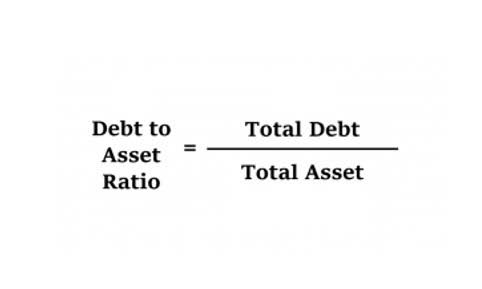
Another factor that affects the balance of the retained earnings account is the declaration of distributions that are paid to the company’s shareholders. Retained earnings are a type of equity and are therefore reported in the shareholders’ equity section of the balance sheet. Although retained earnings are not themselves an asset, they can be used to purchase assets such as inventory, equipment, or other investments. Therefore, a company with a large retained earnings balance may be well-positioned to purchase new assets in the future or offer increased dividend payments to its shareholders.
- Accurate reporting of retained earnings is essential for stakeholders, as it influences decisions related to dividends, reinvestment strategies, and overall financial planning.
- The statement of retained earnings is a key financial document that shows how much earnings a company has accumulated and kept in the company since inception.
- Cash dividends result in cash outflows and are recorded as net reductions.
- The strategic deployment of retained earnings is a testament to a company’s foresight and planning.
- Investors often scrutinize this ratio to assess a company’s ability to create value for its shareholders.
- When a company buys back its own stock, it reduces the number of outstanding shares, which can increase the company’s earnings per share.
Retained Earnings and Financial Ratios
Retained earnings accumulate over time and reflect the company’s ability to generate profits and retain them for growth or other financial needs. According to FASB Statement No. 16, prior period adjustments consist almost entirely of corrections of errors in previously published financial statements. Corrections of abnormal, nonrecurring errors that may have been caused by the improper use of an accounting principle or by mathematical mistakes are prior period adjustments. Normal, recurring corrections and adjustments, which follow inevitably from the use of estimates in accounting practice, are not treated as prior period adjustments.

How does the accounting equation relate to normal balances?

If you look at the formula above, you will know how the dividend would affect the retained earnings. Then top management will consider paying the dividend to the shareholders. Don’t forget to record the dividends you paid out during the accounting period. It’s important to note that retained earnings are cumulative, meaning the ending retained earnings balance for one accounting period becomes the beginning retained earnings balance for the next period. Net profit refers to the total revenue generated by a company minus all expenses, taxes, and other costs incurred during a given accounting period. Positive retained earnings signify financial stability and the ability to reinvest in the company’s growth.

Understanding Retained Earnings
If the major entity’s fund is sourcing from a loan, the interest expenses would be https://www.bookstime.com/ higher than those with high capital funding. That means the entity that uses loans will pay more interest expenses, affecting retained earnings. Otherwise, gross profits will reduce subsequently and then the negative effect on net income. Analyst normally investigates further on the reason that makes loss gross profit margin.
- Effectively managing retained earnings is essential for long-term success.
- In essence, Retained Earnings represents the accumulated profits that a company has kept over time.
- The useful lifespan of an asset is the time it will take from its purchase to when it will no longer be efficient.
- This statement is the extended version of the statement of change in equity, and this statement shows the detail of changes in retained earning of the period.
- Retained earnings can typically be found on a company’s balance sheet in the shareholders’ equity section.
- Retained earnings are the profits of a business entity that have not been disbursed to the shareholders.
- The normal balance of the Income Summary account is a credit when it reflects net income and a debit when it reflects a net loss.
How do asset and liability accounts differ in terms of normal balances?
Observing it over a period of time (for example, over five years) only indicates the trend of how much money a company is adding to retained earnings. Management and shareholders may want the company to retain earnings for several different reasons. This article comprehensively covered the accounting treatment, disclosure, recording, recognition, and appropriation of retained earnings for any business entity. We hope it will help you understand the purpose and use of the retained earnings in any business entity. Retained earnings are a part of net Travel Agency Accounting income, but it does not correspond to only the income of the current financial period. It is an accumulation of all the historical profits percentages kept in the company’s reserves for different purposes.
Find your net income (or loss) for the current period
Up to normal increases in operating expenses also negatively affect net income what is the normal balance for retained earnings and, subsequently, earnings. Entity performance affects net income and net losses and the key elements that analysts normally take into accounts, including net income, cost of goods sold, operating expenses, and interest expenses. In most cases, it is shown in the entity’s balance sheet, statement of change in equity, as well as a statement of retained earnings.

The level of retained earnings can guide businesses in making important investment decisions. If retained earnings are low, it may be wiser to hold onto the funds and use them as a financial cushion in case of unforeseen expenses or cash flow issues rather than distributing them as dividends. However, if both the net profit and retained earnings are substantial, it may be time to consider investing in expanding the business with new equipment, facilities, or other growth opportunities. When lenders and investors evaluate a business, they often look beyond monthly net profit figures and focus on retained earnings.
Applications in Financial Modeling
They highlight the importance of understanding journal entries in everyday business. On the other hand, a credit entry often means more liabilities, equity, or income. For instance, when transactions boost accounts receivable, it’s marked as a debit. Using ratios from the balance sheet, like debt-to-equity, helps compare a company’s health to others.
